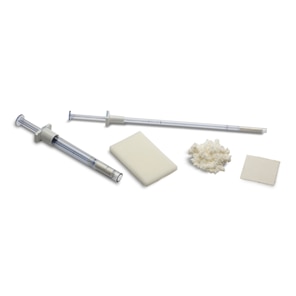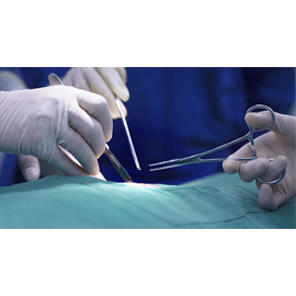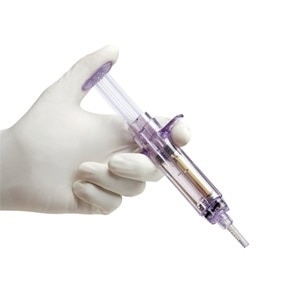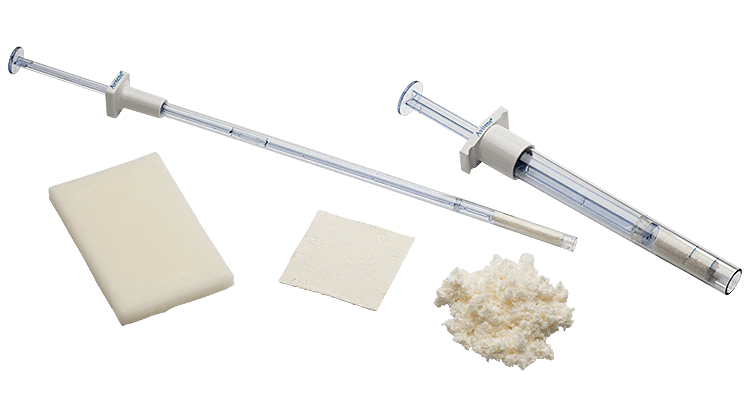RELATED PRODUCTS NOT AVAILABLE
true
Surgical Hemostatic Sealants
BD’s surgical hemostatic sealants are designed to meet the needs of clinicians in thoracic and aortic surgery.

- Overview
- Products & Accessories
- FAQ
Trusted Surgical Hemostatic Sealants
As many as 58% of lung surgery patients develop an air leak in the OR1, and more than 15% develop a persistent air leak after surgery lasting more than 7 days.2 Progel™ Pleural Air Leak Sealant is the only sealant designed and indicated to treat air leaks during thoracic surgery.3
In addition, Tridyne™ Vascular Sealant offers surgeons a unique surgical sealant solution to control bleeding during aortic surgery when adjunctive measures are required.
Progel™ Pleural Air Leak Sealant
FDA Approval
- Progel™ Pleural Air Leak Sealant is the only surgical hemostatic sealant approved by the FDA to treat pleural air leaks.
Clinically Proven
- Progel™ Pleural Air Leak Sealant helped to seal or reduce 96% of air leaks in the OR in a clinical trial of patients undergoing Video-Assisted or Robotic-Assisted lung resection.
Cost-effective
- Progel™ Pleural Air Leak Sealant reduced the length of hospitalization by 1.9 days on average by effectively sealing air leaks. This resulted in good outcomes associated with potentially minimizing associated complications and providing cost-of-care savings.
Tridyne™ Vascular Sealant
Simple Application
- Tridyne™ Vascular Sealant comes with an applicator designed to provide easy sealant transitioning from target application to address bleeding, all while providing continuous coverage without clumping.
Strong and Efficient Coverage
- Tridyne™ Vascular Sealant is made from a clear hydrogel that allows for direct visual confirmation of hemostasis, providing both clarity and full coverage at the anastomotic suture line.
Proven Performance
- In a randomized study of 156 patients from 18 different centers, Tridyne™ Vascular Sealant outperformed Gelfoam® Plus Hemostasis Kit in several critical measures during thoracic aortic surgery.
The Surgical Hemostatic Sealant of Choice
- Tridyne™ Vascular Sealant provides an efficient and simple solution with proven results. With its unique application control towards bleeding, it is a reliable and trusted surgical hemostatic sealant for aortic repair.
-

The BD Ambulatory Surgery Center portfolio of category-leading products, innovative solutions and dedicated support is designed to help ASCs improve clinical efficiency and enhance patient care.
-

BD hemostats come in various forms that all help accelerate natural clot formation in many surgical applications. They facilitate use with features such as preloaded applicators and ready-to-use designs.
-

We offer a full portfolio of surgical products
-

BD’s Progel™ Pleural Air Leak Sealant is designed with a unique combination of strength, flexibility and adherence. The gel forms strong bonds with the tissue and works with the lungs during respiration to help manage air leaks after a surgical operation.
-

View BD’s comprehensive range of biosurgery products that help surgeons address different types of bleeding that occur in a wide range of surgical procedures. Our family of sealing and hemostatic solutions are carefully designed to meet your surgical needs.
- Allen, Mark S. et al. Prospective Randomized Study Evaluating a Biodegradable Polymeric Sealant for Sealing Intraoperative Air Leaks That Occur During Pulmonary Resection. Annals of Thoracic Surgery 2004;77:1792-1801. BD. Data on file.
- Brunelli A, et al. Predictors of prolonged air leak after pulmonary lobectomy, Ann Thorac Surg. 2004;77:1208-1210.
- Progel™ Pleural Air Leak Sealant Instructions for Use. M-00443.
- Khoynezhad A, DelaRosa J, Moon M, et al. Facilitating Hemostasis After Proximal Aortic Surgery: Results of The PROTECT Trial. Ann Thorac Surg. 2018;105(5):1357-1364.
BD-111457
Sealants are medical adhesives that form a barrier to help reduce or eliminate bleeding and leakage of air or fluid by sealing the space between the sealant and the tissue site.
Surgical sealants have a wide range of applications, including thoracic, aortic and urological surgery. At BD, our sealants can be used in the following applications.
- Progel™ Pleural Air Leak Sealant is a single use device intended for application to visceral pleura after standard visceral pleural closure with, for example, sutures or staples, of visible air leaks incurred during resection of lung parenchyma.
- Tridyne™ Vascular Sealant is indicated for use in aortic surgery when adjunctive measures to achieve hemostasis are required by mechanically sealing areas of leakage.
Surgical sealants provide a flexible yet sturdy matrix over leakages and bleeding. They adhere to tissues through covalent polymerization. At BD, our sealants have the following applications:
- Progel™ Pleural Air Leak Sealant works by gelling at the tissue site, binding directly to the lung for optimal adherence and an airtight seal.
- Tridyne™ Vascular Sealant works by forming a strong, flexible hydrogel seal at the application site, even in anticoagulated patients.
It was found in a study that the regular use of a surgical sealant resulted in fewer incidences of prolonged air leaks which helped decrease morbidity and mortality in surgical patients as compared to not using sealants.
- As many as 58% of lung surgery patients will experience an air leak, and more than 15% will develop a persistent air leak after surgery. In a clinical trial of patients undergoing Video-Assisted or Robotic-Assisted lung resection, Progel™ Pleural Air Leak Sealant sealed or reduced 96% of air leaks in the OR.
- In a prospective, randomized, controlled multicenter study, Tridyne™ Vascular Sealant outperformed Gelfoam® Plus Hemostasis Kit in several critical measures. The study included 156 patients from 18 different centers who underwent thoracic aortic surgery, with hemostasis evaluated at the aortic anastomotic suture line.
There is a wide range of sealants available for different scenarios. Among the most common types include fibrin, glutaraldehyde-albumin, polyethylene-glycol-based and cyanoacrylates.
At BD, both Progel™ Pleural Air Leak Sealant and Tridyne™ Vascular Sealant are made from a formulation of Polyethylene Glycol (PEG) and Human Serum Albumin (HSA).
While fibrin sealants are the most common, the effectiveness of surgical sealants depends on the setting and surgical area. There is no single sealant that is more effective in all situations than others. BD offers two sealants that are effective in the right situation:
- Progel™ Pleural Air Leak Sealant is the only sealant approved by the FDA to treat pleural air leaks and is the only sealant clinically proven to effectively treat air leak complications in both open and minimally invasive thoracic surgery.
- Tridyne™ Vascular Sealant forms a completely clear hydrogel at the application site, allowing for visual confirmation of hemostasis at the anastomotic suture line—making it an ideal choice for aortic surgery.
Surgical sealants are generally safe, but some risks have been noted, such as albumin allergic reactions as well as the risk of stenosis in albumin-based sealants. Polyethylene-glycol-based sealants also have a risk of impaired renal function, making them unadvisable to use in cases of renal insufficiency. For a complete list of precautions and warnings for ProgelTM PALS or TridyneTM Vascular Sealant please see product IFUs.
true